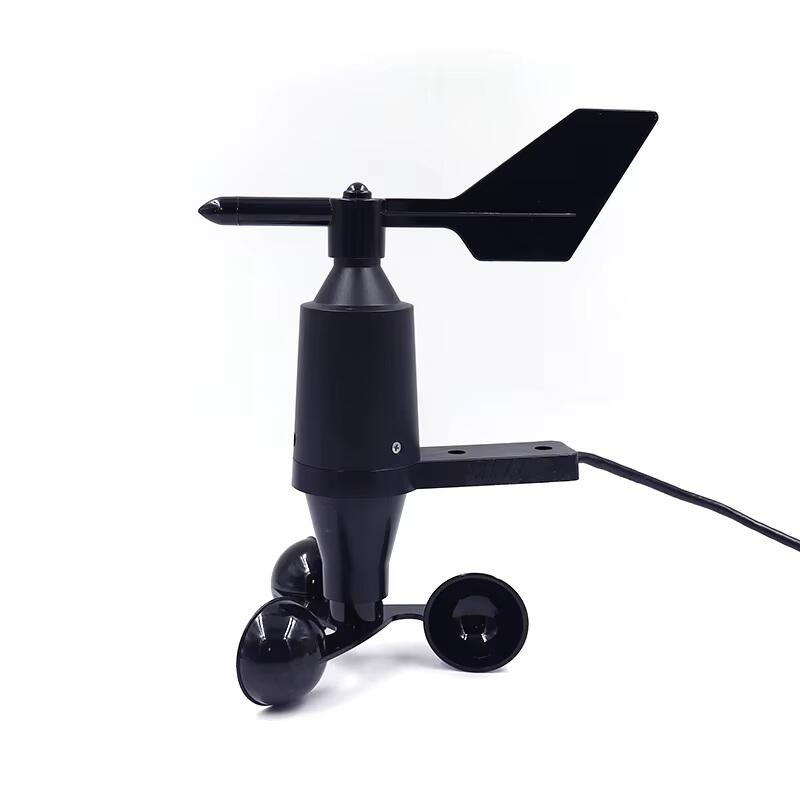Meteorological monitoring is undergoing a gentle revolution because chronic measurement technologies are replaced by more sophisticated options. Within these innovations, the ultrasonic wind-sensor has transformed the spot light into a game changing technology that we measure wind patterns. Such advanced equipment are installed new benchmarks for accuracy, reliability and ability to take action within various environmental testing applications in various industries.
Working Principle of Ultrasonic Wind Sensors
At the heart of ultrasonic wind sensor technology is a simple measurement principle, which prevents the necessity of mechanical moving parts. These sensors are based on the use of pairs of ultrasonic transducers that send and receive high-frequency sound waves in turn. The flows of the wind between the transducers influence the time required for the sound pulses to pass between making the transmission faster if the flow is along with the wind and slower in turns if the flow is against the wind. To accurately determine wind speed and direction, deeply complex digital signal processors then analyze these very small time differences, to determine the speed and direction with incomparable precision. In more advanced designs, several transducer pairs which are aligned along different three-dimensional setups can be included so as to enable extensive wind profiling that reveals complex airflow patterns that are undetectable by conventional measurement devices.
Advantages of Ultrasonic Wind Sensors
The gains of the ultrasonic wind measurement technology go way beyond mere functionality. These sensors provide maintenance free operation as there are no moving parts which wear out or require lubrication resulting in substantially reduced life costs. Their unique solid-state configuration offers an instantaneous reading in response to wind changes without mechanical inertia of traditional cup and vane anemometers. Many of today’s ultrasonic sensors include self-diagnostic functions and autohisers to avoid ice buildup in cold areas. Some manufacturers have improved their designs with corrosion resistant materials and IP protected boxes that can survive harsh weather while having accurate reading. These benefits bring together to form a wind measurement solution that provides dependable, accurate information in just about all environments, with only basic operation requirements.
Practical Applications of Ultrasonic Wind Sensors
The outstanding abilities of ultrasonic wind sensors have been translated into their implementation on a broad range of meteorological and industrial applications. In weather monitoring networks, they deliver the high-level measurements desirable in reliable forecasting and climate study. Wind farms use these sensors for site assessment as well as for controlling turbines, where sensor accuracy goes directly to influence energy production efficiency. An optimal timing of pesticide application is implemented through them by smart agriculture systems to avoid chemical drift. Specialized applications such as; Airport wind shear detection, Structural health monitoring for bridges and tall buildings and Environmental effect studies can therefore be undertaken. Some manufacturers have also engineered marine-grade variants for offshore installations reflecting how flexible the technology is in varied riding platforms and measuring challenges.
Tips for Choosing Ultrasonic Wind Sensors
Choosing the right ultrasonic wind sensor requires a critical consideration of several technical and operation factors. Tolerance values and the working range specifications are to be consistent with the application’s requirements: either the monitoring of gentle breezes, or hurricane-force winds. Environmental durability is another important factor where industrial-grade models provide robust construction for brutal outdoor use. Some manufacturers produce sensors that can output signals in various forms ranging from simple analog signals up to complex digital protocols that easily fit on modern data acquisition systems. The power requirements and the communication interfaces should be compatible with the surrounding infrastructure, and some extra features, for example, heating elements or lightning protection may be required for particular installations. Potential buyers should also consider the physical measurement of the sensor and the mounting possibilities of the sensor in order to choose a proper siting for accurate measurements.
Precautions for Using Ultrasonic Wind Sensors
Although ultrasonic wind sensors are highly robust, correct installation and maintenance methods are critical to maximum performance. Location of the mounting is critical – sensors should not be mounted in locations where there is no free air flow, and may be surrounded or near structures that would cause turbulence or wind shadows like buildings, or within buildings. Relatively frequent inspection and cleaning of the surfaces of transducers contribute to preserving accuracy of measurements, especially under conditions of high dustiness or pollution. Some of them suggest periodic comparison with reference instruments especially for the applications where high-precision measurements are required. Proper sealing and protection of electrical connections from moisture should be ensured; special attention being made regarding lightning protection in places prone to electric storms. For cold climate installations, maintaining correct operation of the heating system avoids ice accumulation that would hinder ultrasonic transmission.

 EN
EN
 AR
AR
 BG
BG
 HR
HR
 FR
FR
 JA
JA
 KO
KO
 PT
PT
 RU
RU
 ES
ES
 ID
ID
 VI
VI
 TH
TH





